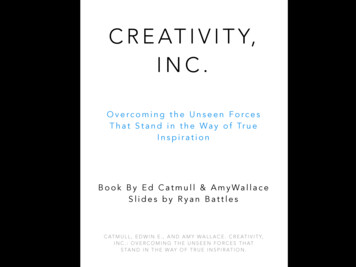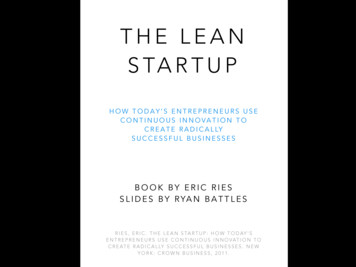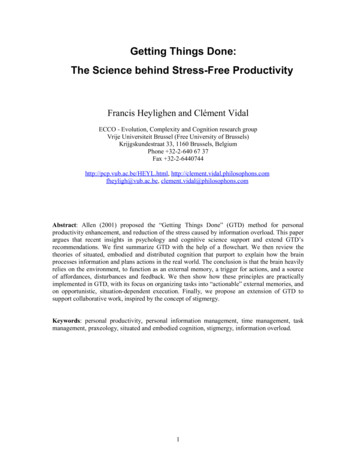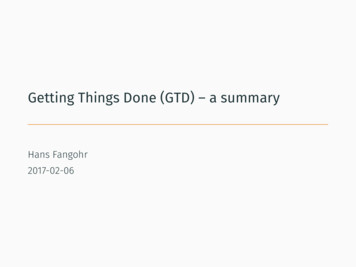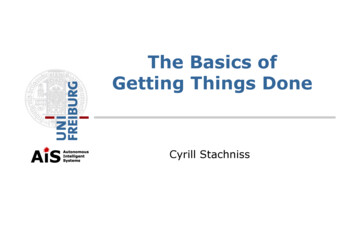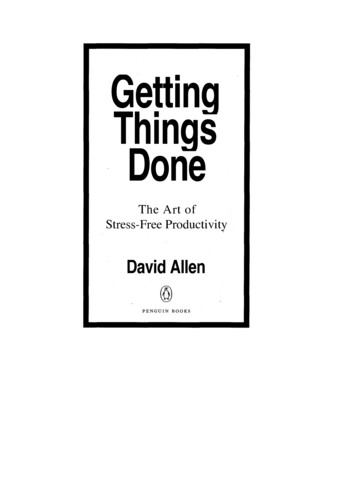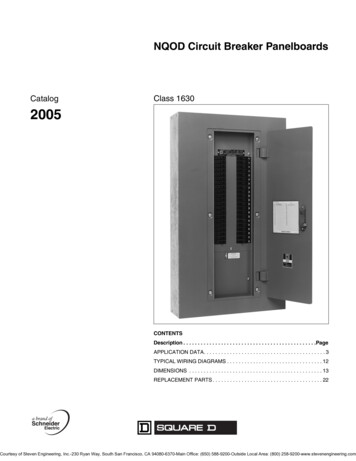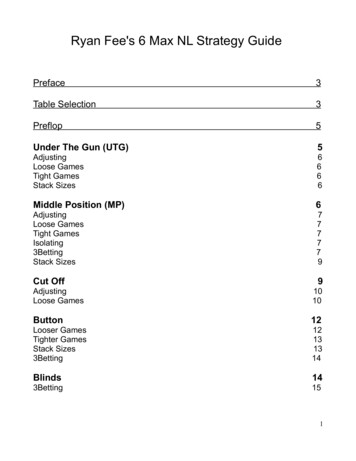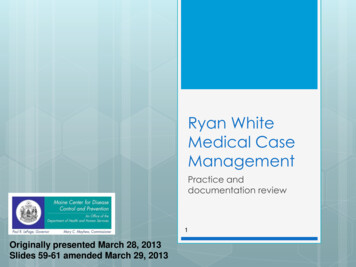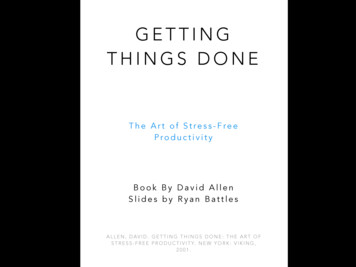
Transcription
GETTINGTHINGS DONEThe Art of Stress-FreeProductivityBook By David AllenSlides by Ryan BattlesA L L E N , D AV I D . G E T T I N G T H I N G S D O N E : T H E A R T O FS T R E S S - F R E E P R O D U C T I V I T Y. N E W Y O R K : V I K I N G ,2001.
This book summary is part of theFREEBusiness Book CollectionGrab the rest here:DOWNLOADTHE BUSINESS BOOK COLLECTIONor visit ryanbattles.com/business-books
With the societal shift to knowledge work,new behaviors and tools are required tosuccessfully manage workflow.
Too much "stuff" stored in a person’s shortterm memory can blow a fuse
The conscious mind is a focusing tool, not astorage place.
One must write down the outcomes theywish to achieve
For every outcome, one must determine the"next physical action" required to move thesituation forward
This next physical action must be organizedin a system one reviews regularly
There are five stages of mastering workflow:to collect, process, organize, review and do.
Collection tools include the physical inbasket, paper-based and electronic notetaking devices, voice-recording devices andemail.
Every open loop must be in your collectionsystem and out of your head.
You must have as few collection buckets asyou can get by with.
You must empty them regularly.
If an item is not actionable, trash it, put itinto a tickler file, or a reference file.
If an item is actionable, what is the nextaction? If it takes less than 2 minutes, do it. Ifmore, delegate or defer it.
Project Planning Steps:
#1 - Define the purpose and principles
#2 - Envision the outcome
#3 - Brainstorm how to get from here tothere
#4 - Organize sequences and priorities
#5 - Identify the next actions
To get started, take several hours or days todump all of your projects and actions fromrunning around in your head, living on postit notes, etc.
Get your inbox to empty by acting,delegating, or deferring.
Never put anything back into "in."
To keep the system working, it is key thatone continues to trust the system.
Review the daily calendar and tickler folders.
Take time each week for a weekly review.
The Six-Level Model for Reviewing YourOwn Work is presented in terms of altitude:
50,000 feet: Life
40,000 feet: Three- to five-year visions
30,000 feet: One-to two-year goals
20,000 feet: Areas of responsibility
10,000 feet: Current projects
Runway: Current actions
One should use the mind to think aboutthings, rather than of things.
Before the end of a meeting, one shouldask, "So what’s the next action here?" toincrease clarity
Even the slightest increase in the use ofnatural planning can bring significantimprovement.
THIS HAS BEEN A BRIEF OVERVIEW OF THEMAIN IDEAS OF GETTING THINGS DONE.!BUY THE BOOK FOR THE FULL EXPERIENCE!A L L E N , D AV I D . G E T T I N G T H I N G S D O N E :T H E A R T O F S T R E S S - F R E E P R O D U C T I V I T Y.NEW YORK: VIKING, 2001.‘A L L P R O D U C T A N D C O M PA N Y N A M E S A R ETRADEMARKS OR REGISTERED TRADEMARKSOF THEIR RESPECTIVE HOLDERS. USE OFT H E M D O E S N O T I M P LY A N Y A F F I L I AT I O NWITH OR ENDORSEMENT BY THEM.
This book summary is part of theFREEBusiness Book CollectionGrab the rest here:DOWNLOADTHE BUSINESS BOOK COLLECTIONor visit ryanbattles.com/business-books
MAIN IDEAS OF GETTING THINGS DONE. ! BUY THE BOOK FOR THE FULL EXPERIENCE ! ALLEN, DAVID. GETTING THINGS DONE: THE ART OF STRESS-FREE PRODUCTIVITY. NEW YORK: VIKING, 2001. ‘ ALL PRODUCT AND COMPANY NAMES ARE TRADEMARKS OR REGISTERED TRADEMARKS OF THEIR RESPECTIVE HOLDERS. USE OF THEM DOES NOT IMPLY ANY AFFILIATION WITH OR ENDORSEMENT BY THEM. DOWNLOAD THE BUSINESS BOOK COLLECTION This book .
